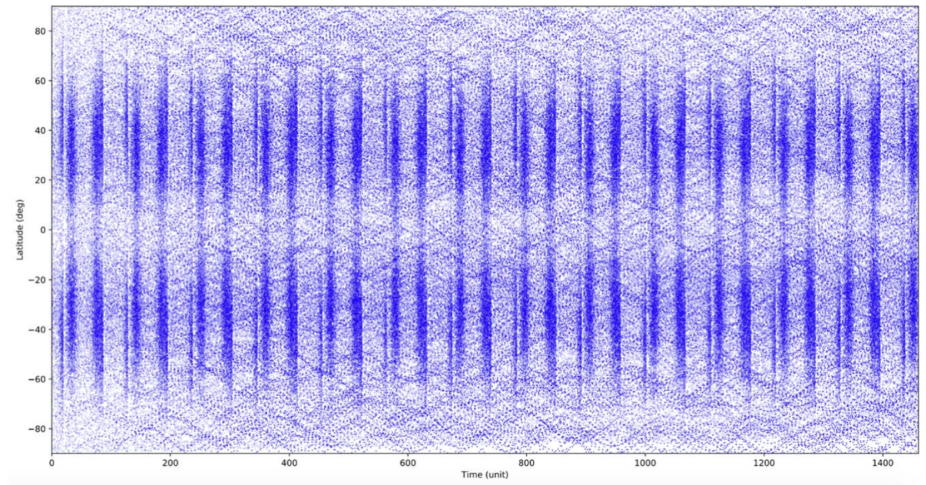The Astrophysical Journal: Photospheric faculae are markers of the solar magnetic field, appearing as bright regions along the edges of granules on the Sun's surface. Mausumi Dikpati et al., using data from the Debrecen Solar Faculae Database, investigated the spatiotemporal distribution of photospheric faculae between 2010 May 1 and 2014 December 31 and found the following. (i) At lower latitudes, there is an enhanced abundance of faculae appearing as stripes at given Carrington longitudes, which are interpreted as indicative of the presence of active longitudes. (ii) At higher latitudes, we identified so-called crisscross patterns of facular appearance. These patterns are likely the result of faculae in regions situated along the boundaries of supergranules. Last but not least, (iii) various periods of oscillatory phenomena were identified in this facular data set, including a longer periodic range consistent with the quasi-biennial oscillations and shorter ones with periods of 4–12 days. Our findings are supported by the visualization of a simple heuristic thought experiment and more complex magnetohydrodynami simulations, strengthening the proposed interpretation of the three observed solar phenomena reported.

Scenario of the faculae distribution where a more realistic signal-to-noise ratio is applied. The model recreates all the observed features such as the parallel stripe lines and the crisscross patterns.